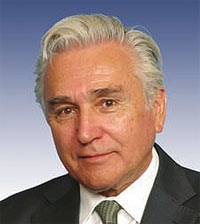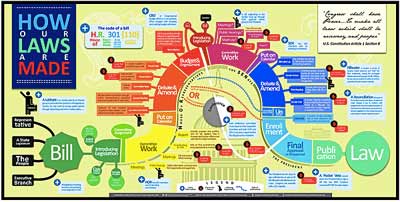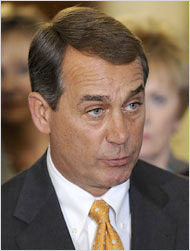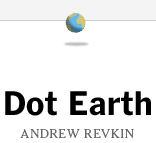Biblio

U.S. Environmental Protection Agency (EPA MOA). 2003. A Memorandum of Agreement Between The United States Environmental Protection Agency and BJ Services Company, Halliburton Energy Services, Inc., and Schlumberger Technology Corporation: Elimination of Diesel Fuel in Hydraulic Fracturing Fluids Injected into Underground Sources of Drinking Water During Hydraulic Fracturing of Coalbed Methane Wells, Dec. 12, 2003.
"While the Companies do not necessarily agree that hydraulic fracturing fluids using diesel fuel endanger USDWs when they are injected into CBM production wells, the Companies are prepared to enter into this agreement in response to EPA’s concerns and to reduce potential risks to the environment." See Drilling Around the Law for a follow-up on this voluntary agreement. According to the Environmental Working Group's report, "This promise, however, applied to only coalbed methane wells -- a small portion of natural gas and oil wells drilled – and only to those drilled directly into underground sources of drinking water."
Weston Wilson. Letter written to Senators Allard and Campbell and Representative DeGette. Denver, Colorado. October 8th, 2004. The U.S. Environmental Protection Agency was criticized by Wilson and others for this Fracking Study which led to the "Halliburton Loophole" of 2005. See New York Times Editorial on Halliburton Loophole. See also the Energy Policy Act of 2005.
U. S. EPA Office of Atmospheric Programs. (2006). Click on Executive Summary (PDF) (26 pp, 310K).
Provides a broad overview of all U.S. greenhouse gas emission sources and sinks, introduces key concepts and discusses the primary drivers for changes in emissions, which has resulted in global warming.
See: Global Warming Frequently Asked Questions
Greenhouse gases Carbon Dioxide (CO2) and Methane (CH4) taken together account for 93% of all emissions, with 85% for (CO2) and 8% for (CH4). Enteric fermentation (flatulence and belching), taking place as a digestive by-product of cows and other ruminant animals accounts for less than half of the Methane emissions. Coal mining and natural gas systems, in addition to the (CO2) emissions of vehicles used to transport water add significantly to the total of all greenhouse gas emissions.
For pie charts graphically showing these percentages, see pages 20-22.
U.S. Senate. Committee on Environment and Public Works. Health Risks to Children and Communities From Recent EPA Proposals and Decisions on Air and Water Quality.
Submitted in Writing to Hearings before the Committee on Environment and Public Works,on February 6, 2007. Statement of Gina M. Solomon, M.D., M.P.H., Senior Scientist Natural Resources Defense Council, Associate Clinical Professor of Medicine University of California, San Francisco. 19 pages.
"Unfortunately, EPA is taking several major steps to eliminate information and decrease health protection from environmental hazards. Six recent draft or final EPA rules will each significantly limit critical information available to scientists, health care providers, communities, and ironically to EPA itself. As a result, children and communities will be left less protected and less able to protect themselves."
An archived Nancy Pelosi blog page.
Americans need Consumer Protection when it comes to Energy and Power.
See The CLEAR Act. (2010): In the wake of the BP disaster, Congress is acting on its commitment to protect America’s families and businesses, rebuild the Gulf Coast, hold BP and oil companies accountable, and work to ensure that a spill of this kind never happens again.
On July 30th, the House passed the CLEAR Act (H.R. 3534) by a vote of 209-193—legislation to effectively prevent and respond to oil spills and protect our coastal communities and waters:
Pelosi has been on it! The MMS has failed us. State monitoring of Horizontal Drilling will not protect consumers. Gas Drilling needs the same Federal scrutiny as Oil Drilling.
Speaker of the U.S. House of Representatives Nancy Pelosi's blog, includes statements by government representatives on 110th congress H.R.6899 Comprehensive American Energy Security and Consumer Protection Act.
The MMS (Minerals and Mining Service) was first brought to my attention through Pelosi's Blog.
Natural Resources Hearing on the Department of Interior Scandal
Thursday, September 18th, 2008 by Karina
Today, the House Natural Resources Committee, led by Chairman Nick J. Rahall, is holding a full Committee oversight hearing on “Recent Interior Department Inspector General Investigations on Federal Oil and Gas Royalty Collections.” Secretary of the U.S. Department of the Interior Dirk Kempthorne and Department of the Interior Inspector General Earl Devaney are testifying. Watch the live webcast.

Sen. Robert Casey
S.1215. 6/9/2009. `Fracturing Responsibility and Awareness of Chemicals (FRAC) Act'. Sponsor: Sen. Casey, Robert P., Jr. [PA], Co-Sponsors in alphabetical order: Sen. Cardin, Benjamin L. [MD], Sen. Feinstein, Dianne [CA], Sen. Gillibrand, Kirsten E. [NY], Sen. Sanders, Bernard [VT], Sen. Schumer, Charles E. [NY].
Referred to Senate committee. Status: Read twice 6/9/2009 and referred to the Committee on Environment and Public Works.
See House Bill: H.R. 2766. 111th Congress. Rep. Diana Degette. Rep. Maurice Hnchey, et al. Fracturing Responsibility and Awareness of Chemicals Act of 2009 - Amends the Safe Drinking Water Act to: (1) repeal the exemption from restrictions on underground injection of fluids near drinking water sources granted to hydraulic fracturing operations under such Act; and (2) require oil and gas companies to disclose the chemicals used in hydraulic fracturing operations. (6/9/2009).

Rep. Diana Degette

Rep. Maurice Hinchey
See: CIVICA: Centrist & Independent Voters in Coalition for America. "How out Laws are Made." 2011-04-09.
The Primer provides regulators, policy makers, and the public with an objective source of information on the technology advances and challenges that accompany deep shale gas development and describes the importance of shale gas in meeting the future energy needs of the United States.
Protecting and conserving water resources is an important aspect of producing shale gas, and this effort was championed by the Ground Water Protection Council through a cooperative agreement with NETL.
U.S. Department of Energy (DOE), Office of Fossil Energy and National Energy Technology Laboratory. Modern Shale Gas Development in the United States: A Primer. Washington, D.C. U.S. Department of Energy (DOE). April 2009. 116pages. [PDF-5.11MB].
Letter sent to the NYS Dept. of Environmental Conservation (NYSDEC) by the U.S. Environmental Protection Agency (EPA). Written in public response to the Draft Supplemental Environmental Impact Statement (dSGEIS). Dec. 30. 2009.
EPA believes that the analysis and discussion of cumulative and indirect impacts in the dSGEIS need to be significantly expanded. Even with its generic format, the dSGEIS should discuss the impacts that may result from past, present, and reasonably foreseeable future projects as well as those impacts associated with gas drilling and hydro fracturing that may occur later in time or at a distance from the immediate project site.
See: Walter Hang's Letter to DEC Commissioner Grannis Regarding Additional Natural Gas Hazards
Editing by Daniel Trotta and Mohammad Zargham.
"U.S. government scientists have for the first time found chemical contaminants in drinking water wells near natural gas drilling operations, fueling concern that a gas-extraction technique is endangering the health of people who live close to drilling rigs."
Daniel J. Soeder and William M. Kappel. "Water Resources and Natural Gas Production from the Marcellus Shale". U.S. Department of the Interior, Fact Sheet 2009-3032, May 2009. U.S. Geological Survey (USGS), 2009. (PDF)
See Figure 7: Example of a gel used in hydrofracturing to carry proppant into a fracture. Photograph by Daniel Soeder, USGS. Page 5.
See also:
Milici, Robert C. (2005). Assessment of undiscovered natural gas resources in Devonian black shales, Appalachian basin, eastern U.S.A.: American Association of Petroleum Geologists Abstracts Volume for the AAPG 2005 Annual Convention, p. A93.
Milici, Robert C. and Christopher S. Swezey. (2006) Assessment of Appalachian Basin Oil and Gas Resources: Devonian Shale–Middle and Upper Paleozoic Total Petroleum System.
"The U.S. Geological Survey (USGS) recently completed an assessment of the technically recoverable undiscovered hydrocarbon resources of the Appalachian Basin Province. The assessment province includes parts of New York, Pennsylvania, Ohio, Maryland, West Virginia, Virginia, Kentucky, Tennessee, Georgia and Alabama."
House Republican Leader John Boehner's blog. Posted by Kevin Boland on July 14th, 2009.
Boehner said, "Democrats talk about creating jobs - but Speaker Pelosi’s national energy tax will cost 2.5 million American jobs each year and will punish every American who dares to flip on a light switch or drives a car.
Democrats are also floating a half-a-trillion dollar tax hike on small businesses as part of their trillion-dollar government-run health care proposal, another sure job-killer."
Boehner was first elected to Congress in 1990, representing a district that includes parts of the suburbs of Cincinnati and Dayton. As a member of Gang of Seven, a group of G.O.P. freshman reformers who demanded that the names of colleagues who had overdrafts at the House bank be made public, Mr. Boehner angered Congressional veterans.
But he quickly became a top lieutenant of Newt Gingrich, the Republican leader in the House who became speaker when the party took control in 1994. Mr. Boehner helped to draft and champion the party's Contract With America. Read More...
For the other side of the Energy Debate, see Speaker of the House Nancy Pelosi's (D-CA) Newsroom Web Page, and her blog, The Gavel-Draining the Swamp.
Congressional Research Service. Anthony Andrews, Coordinator, Specialist in Energy and Energy Infrastructure. CRS Report for Congress Prepared for Members and Committees of Congress. October 30, 2009. 53 pages.
"...The saline “flowback” water pumped back to the surface after the fracturing process poses a significant environmental management challenge in the Marcellus region."
The Congressional Research Service (CRS) serves shared staff to congressional committees and Members of Congress. CRS experts assist at every stage of the legislative process — from the early considerations that precede bill drafting, through committee hearings and floor debate, to the oversight of enacted laws and various agency activities.
See: What is the Congressional Research Service?
It is ironic that the following report was about to be published on April 20, 2010, the day the BP Deepwater Horizon platform caught fire, resulting in the largest oil spill in U.S. history.
See also:
Humphries, Marc, Robert Pirog, and Gene Whitney. U.S. Offshore Oil and Gas Resources: Prospects and Processes. Washington, D.C.: Congressional Research Service, April 26, 2010. (PDF).
Additional authors of Unconventional Gas Shales:
Peter Folger
Specialist in Energy and Natural Resources Policy
Marc Humphries
Analyst in Energy Policy
Claudia Copeland
Specialist in Resources and Environmental Policy
Mary Tiemann
Specialist in Environmental Policy
Robert Meltz
Legislative Attorney
Cynthia Brougher
Legislative Attorney
Abstract:
As the hunt for important unconventional gas resources in America expands, an increasingly popular method of wringing resources from stubborn underground formations is a process called hydraulic fracturing – also described as hydrofracturing, fracking, or fracing – wherein fluids are pumped at high pressure underground to fracture a formation and release trapped oil or gas.
Operators have fraced wells for more than fifty years, but the practice has recently grown rapidly in areas like the Barnett Shale of North Central Texas and the Marcellus Shale beneath Pennsylvania, New York, and other Appalachian states.
This Article describes the process of hydraulic fracturing, existing studies of the environmental effects of hydraulic fracturing, and the laws and regulations that apply to the practice. It argues that there is no direct federal regulation of the fracing process (the pumping of fluids into a wellbore), that court guidance in this area is limited, and that state regulations differ substantially.
Although other general regulations apply to the practice, the Article argues that in light of the dearth of regulation specific to fracturing in some areas, more study of the potential environmental and human health effects of fracing is needed in order to determine whether current regulation is sufficient. The EPA completed a partial study in 2004, but this Article focuses on the deficiencies of that study and calls for a new, national, scientific study of the practice.
Conclusion:
...no one knows the full range of effects because they have not been adequately researched. The EPA’s report is the most comprehensive to date, but was part of a highly-charged political process and was never completed, because the EPA concluded, perhaps prematurely, that further study was unnecessary.
Furthermore, the report investigated fracing in only one type of formation – coalbeds – and assessed the impacts of one stage of fracing, failing to seriously consider concerns such as groundwater depletion and surface disposal of fracing waste.
The highest regulatory priority for fracing should be the instigation of a federal, scientifically rigorous report prepared by the National Academy of Sciences or a similar “neutral” body and a simultaneous regulatory risk-limiting mechanism.
Next, based on the data contained within this report, and given the risks of certain types of fracing, Congress should consider reversing its 2005 exemption of fracing from the Safe Drinking Water Act; it should not wait to commence this process pending the completion of the report, although the report will be essential for future statutory and regulatory decisions.
...In the rush to extract essential resources, a process which itself contributes to human wellbeing, other aspects of human wellbeing – the quality of the environment and public health – must not be cast aside as a mere impediment to progress.
See: Oil & Gas Accountability Project (OGAP)
See also: Pew Campaign for Responsible Mining
Sample the Electronic Newsletter above featuring articles on industrial development of natural gas to gain a perspective on how government energy policy is crafted.
U.S. Department of Energy (DOE), Energy Information Administration. Report #:DOE/EIA-0484(2009).
Much of the increase in U.S. natural gas reserves results from expanded knowledge and exploration of shale resources.
World marketed energy consumption increases by 49 percent from 2007 to 2035 in the Reference case.
Total energy demand in non-OECD countries increases by 84 percent, compared with an increase of 14 percent in OECD countries.
NETL Oil & Natural Gas Technologies Reference Shelf. Recently released and in-demand reference materials are available directly from this page using the links on this website.
The National Energy Technology Laboratory (NETL), part of DOE’s national laboratory system, is owned and operated by the U.S. Department of Energy (DOE). NETL supports DOE’s mission to advance the national, economic, and energy security of the United States.
...the sometimes loosely governed rush to liberate this fuel from rock deposits through hydraulic fracturing, or “fracking,” has helped invigorate opponents of drilling. I agree with Christopher Helman over at Forbes, who wrote a couple of days ago that low gas prices mean there’s little to lose by holding up drilling in highly contested areas (the Marcellus Shale here in New York being the prime battle zone) while an Environmental Protection Agency scientific review is completed.
I was at the Environmental Protection Agency on Tuesday and officials there made a convincing case that the hydraulic fracturing study, due out in 2012, will clarify where real risks lie.
But campaigners who fight natural gas altogether, like anyone else immersed in the struggle over an energy policy that works for the long haul, had better come up with a real-world game plan for fostering human progress while limiting environmental risks.
Otherwise, they’ve moved from the Nimby camp to the world of the Banana (build absolutely nothing anywhere near anything).
See: Climate Co-benefits and Child Mortality Wedges
About Dot Earth
In Dot Earth, which recently moved from the news side of The Times to the Opinion section, Andrew C. Revkin examines efforts to balance human affairs with the planet’s limits.




























